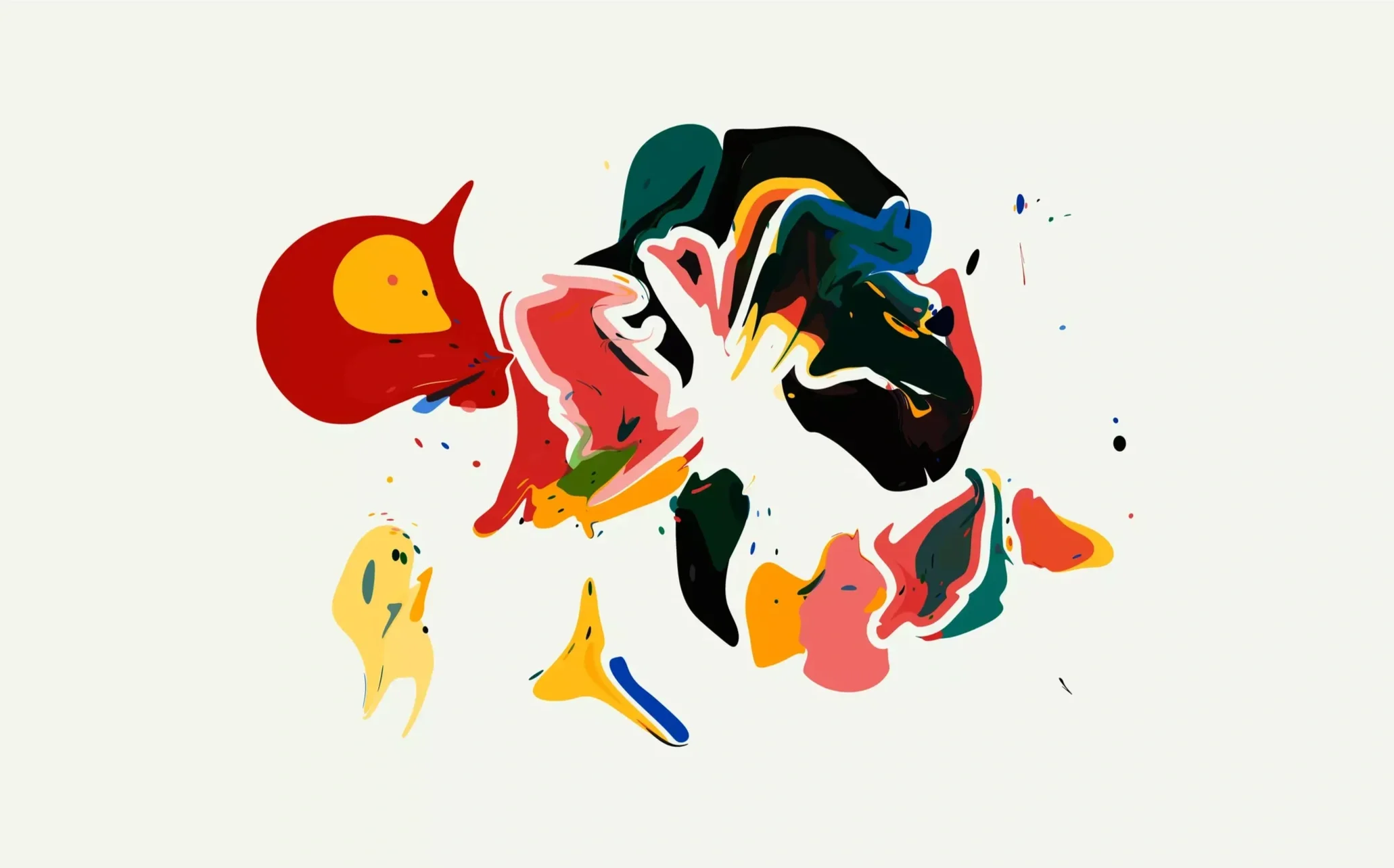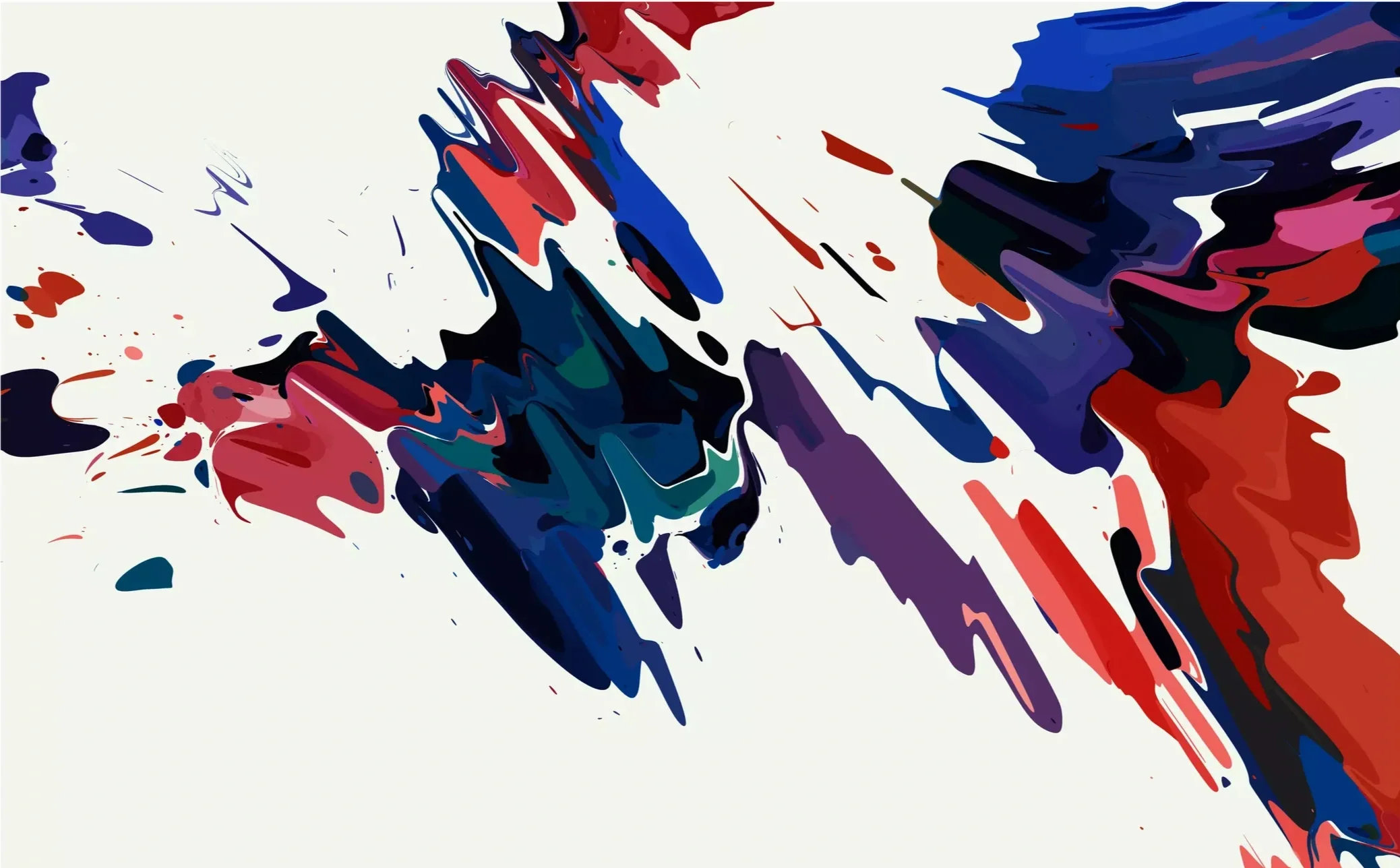Lars Wander: understanding physical world through computation
Once, someone asked Willem de Kooning why his paintings were still sticky after all these years. He blushed and replied that he had added mayonnaise to the paint. Later, scientists tested the surface — there was no trace of mayo — yet the story endured, becoming part of art-world folklore.
In art history, colour mixing was a private ritual, a secret alchemy that took place behind studio doors — the sacred prelude to creation itself. Lars Wander’s approach, by contrast, is transparent and meticulously documented. His colours are generated “via Kubelka–Munk theory, using spectral coefficients derived from Golden Heavy Body Acrylics and computed/provided by the lab of Roy Berns.”
How you see me #3
A Hamburg-born, New York–based artist with a background in software engineering, Wander relies on the computer’s processing power and aesthetics to explore the role of computation in the understanding of our physical world and our relationship to it, the divide between observation and interaction, the existence of an abstract space of all possibilities and how its distribution of outcomes steers reality, and lastly the role of entropy in our ability to observe and make sense of the world. His works examine how systems of logic and computation can become vehicles for perception, and how perception itself is never neutral. Beyond the technical precision lies a deeper curiosity: Wander is fascinated by how our ways of seeing are shaped by language, culture, and collective habits of thought. In his works, both generative and physical, colour, form, and light are not just physical phenomena but cultural ones.
He often notes that a computer does exactly what it is told to do, yet he still finds himself surprised by the outcomes. His practice explores this paradox between seeming control and emergent unpredictability. During almost a decade at Google, including time in the visualisation department, he became mesmerised by the aesthetics of data and computation itself. Some of the data visualisations, he recalls, were beautiful enough to hang on the wall.
As an artist, Wander was deeply influenced by Zancan and Quibibi, whose generative systems unfold as intricate, varied universes. Similarly, he spends considerable time contemplating and sketching ideas for frameworks of his own design — coded from scratch in unembellished JavaScript and WebGL — that allow him to explore how a simple rule can give rise to unexpected complexity. He emphasises that the simplicity of the instruments he uses shapes the outcome of his work.
Gossamer (2021), his first long-form generative series, grew out of his experiments with pen plotters but extended beyond what the mechanical pen could handle. Thousands of fine lines overlap into fields that shimmer between drawing and textile, evoking the fabric suspended in the air. “It was based on a technique I had developed while plotting,” he said, “but one of my first attempts to make generative artwork that wasn’t rendered with a plotter.” Gossamer is where code begins to mimic gesture.
That sense of process carries into Unfolded (2021), which builds on the act of folding and unfolding a digital plane. The algorithm creases an imagined sheet, recording every fold as binary data — mountain or valley — before reversing the sequence and colouring the resulting shapes by shared histories. The work reflects on how information systems retain the memory of their own formation, suggesting that every image is, in part, an archive of its process.
How you see me (2022), which Wander describes as a “series of 19 generative gestural works”, brings perception to the centre. The series explores pareidolia, the tendency of the human brain to perceive meaningful patterns—especially faces or figures—in random or ambiguous visual information, such as clouds, rocks or trees. Blobs of colour hover against white grounds, never quite mixing to honour their digital origins. “What blows my mind,” Wander told Verse, “is how much of our perception is dependent on culture… On one hand, it makes communicating visually feel kind of hopeless; on the other, it’s an opportunity to embrace that ambiguity.” The title turns the algorithm back on the viewer: how you see me is the real variable in the code.
Toni Marinara, co-founder of ARTXCODE that represents Wander, describes him as “reserved, precise, curious, patient and warm. These characteristics come into focus when you become familiar with his artwork. His practice spans a wide aesthetic range, from highly colourful blobs of digital paint splattered across the screen, to enumerative, precisely pen-plotted lines. What ties the work together are the numbers. Lars is a math guy, he seeks to answer big questions through complex or sometimes very simple equations.
Most people cannot grasp these equations, but we can appreciate the artist's ability to craft them and the visual worlds they bring forward. The questions, like the visual outputs, range from the simple to the complex: how many times can you fold a rubber band? What is the line that separates observation and interaction? I have no idea but I bet you Lars can show you, through his code and with a humble, gentle smile.
A practitioner of jiu-jitsu, a sport where restraint and timing are everything, Lars implements this into his artistic practice. He never rushes. The work takes the time it needs. And once it’s ready, the underlying mechanics are not thrust forward; instead, an elegant, quietly enjoyable visual experience leads the way. Should you want, like a good professor of the Brazilian fighting sport, Lars is happy to walk you through the movements he’s taken to get the work onto the screen or the pen-plotted page. Generative art is lucky to have him, and I am sure his explorations will continue to inspire generations of creative programmers and artists.”
If de Kooning’s supposed mayonnaise hinted at the mystery of matter — the rumour of something irrational in the mix — Wander’s work embraces that same uncertainty, but with full disclosure. His systems are open, documented, and precise. Yet within their logic, something still resists explanation or gets us by surprise. Wander’s significance lies in this reconciliation of clarity and mystery — in showing that transparency does not eliminate the poetic, but rather redefines where it lives.
Discover Lars Wonder’s works on objkt.







